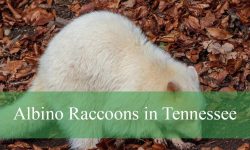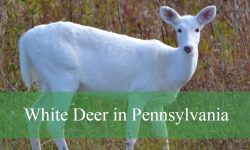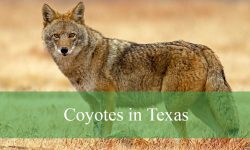Utah’s wilderness is a land of contrasts, where snowcapped peaks meet red canyons and deep forests blend into desert valleys. Within these breathtaking landscapes live two of North America’s most mysterious predators, the cougar and the bobcat. Both species are masters of stealth and survival, shaping the ecosystem through their hunting habits and natural balance. But what truly happens when these two secretive cats cross paths?
Encounters between cougars and bobcats are extremely rare, yet the overlap of their habitats makes such meetings possible. As Utah’s population expands and development reaches deeper into wildlife territories, these predators are occasionally forced into closer contact. Each encounter tells a story about hierarchy, behavior, and adaptation in the wild.
This article explores the fascinating dynamics between cougars and bobcats in Utah. You will learn how they differ in size, diet, behavior, and territory, and what scientists have discovered about their rare interactions in the wild.
The Wild Landscape of Utah: A Shared Territory
Utah’s geography is ideal for both cougars and bobcats. From the Wasatch Range to the red rock deserts of Zion and Canyonlands, the state offers a wide variety of environments for these cats to hunt and live. Cougars, also known as mountain lions, prefer rugged terrain with steep cliffs and dense vegetation that help them stalk large prey. Bobcats, smaller but equally resourceful, adapt to almost any habitat, including deserts, forests, and foothills.
The overlapping of their ranges is common, especially in central and southern Utah. Mule deer, rabbits, and other small mammals thrive in these regions, providing a stable food source for both species. Even though they share hunting grounds, their preferred prey and hunting techniques differ, which helps reduce direct conflict.
Utah’s Department of Wildlife Resources estimates that both cougar and bobcat populations are stable, supported by a healthy prey base and protected wilderness areas. However, habitat fragmentation due to urban growth continues to push these predators closer together.
The Cougar: Utah’s Apex Predator

The cougar, or mountain lion, is the largest wild cat in Utah and one of the most powerful predators in North America. Adult males can weigh up to 200 pounds, while females usually weigh between 90 and 130 pounds. They have long muscular bodies, strong limbs, and a long tail that helps them balance during pursuit. Their tan-colored fur blends perfectly with Utah’s rocky landscapes.
Cougars are solitary animals that patrol vast territories, often covering over 100 square miles. They mark their range with scent scrapes and claw marks to warn other cougars to stay away. Their main prey includes deer, elk calves, and smaller mammals. With their exceptional strength, cougars dominate other predators in Utah, including coyotes and foxes.
Although they are at the top of the food chain, cougars generally avoid unnecessary fights. When encountering bobcats, they often ignore them unless they perceive competition or an easy meal. Their sheer size and confidence make them natural rulers of Utah’s wild spaces.
The Bobcat: Small but Fearless
The bobcat, though much smaller than the cougar, is a fierce and adaptable predator. Weighing between 15 and 30 pounds, it is recognized by its short bobbed tail, tufted ears, and spotted fur that provides excellent camouflage. Its coat color ranges from grayish brown to reddish, depending on the region, allowing it to blend easily with Utah’s diverse terrain.
Bobcats mainly hunt rabbits, squirrels, birds, and other small animals. They rely on stealth and patience, waiting quietly for the perfect moment to strike. Unlike cougars that roam wide territories, bobcats prefer smaller home ranges and often stay near reliable food sources.
In areas shared with cougars, bobcats adapt by adjusting their activity patterns. They may hunt during different hours or use denser cover to avoid larger predators. Their intelligence and flexibility have made them one of the most successful small wild cats in North America.
Territorial Overlap and Avoidance
Cougars and bobcats often share the same regions, particularly in Utah’s mountainous and forested areas. However, actual encounters remain rare because of their differing habits. Cougars are mostly nocturnal or crepuscular, while bobcats are more active at dawn and dusk. This difference in timing helps them avoid each other even in overlapping habitats.
Researchers using motion-sensor cameras have documented both species using the same trails at different times. In most cases, the bobcat visits an area soon after the cougar has left. This behavior shows that bobcats can detect the presence of larger predators through scent and avoid potential danger.
Although both predators may hunt in the same zone, competition for food is minimal. Cougars prefer large game such as deer, while bobcats specialize in smaller prey. This natural separation of dietary niches helps maintain peaceful coexistence.
What Happens When They Meet
Avoidance
In most situations, when a cougar and a bobcat cross paths, the smaller cat immediately retreats. Bobcats have excellent senses of smell and hearing, which help them detect cougars from a distance. Avoiding confrontation is their best survival strategy. They may climb trees or hide among rocks until the threat has passed.
Intimidation or Warning
Sometimes, a bobcat may issue warning signals such as growling or hissing if it feels cornered. However, these gestures rarely deter a cougar. The larger predator typically ignores such challenges or moves on unless it feels provoked.
Predation
Though uncommon, cougars occasionally kill bobcats. This usually happens when food is scarce, or the cougar encounters a vulnerable individual such as a young or injured bobcat. Such events are rare and are more about opportunity than predation preference.
Coexistence Without Conflict
Many encounters likely end without any aggression. The two cats may sense each other’s presence, keep their distance, and move on. This quiet coexistence reflects the delicate balance of instinct and respect that defines predator interactions in the wild.
Food Competition and Scavenging Behavior
Cougars and bobcats rarely compete directly for the same prey. Cougars focus on large mammals, while bobcats hunt smaller animals. However, overlap can occur during harsh winters when smaller prey is less available. In such cases, bobcats have been seen feeding on carcasses left behind by cougars.
Trail cameras in Utah have recorded bobcats visiting cougar kill sites shortly after the cougar departs. This scavenging behavior allows bobcats to access high-energy meals without expending too much effort. It also demonstrates the complex relationship between predators, where one’s leftovers become another’s survival resource.
For cougars, bobcats do not pose a significant threat to their food sources. They dominate the ecosystem and have little reason to confront smaller carnivores unless necessary.
Behavioral Differences That Prevent Conflict
Behavior plays a key role in keeping the peace between these two species. Cougars, as apex predators, command space and respect through dominance. Bobcats survive by staying hidden and avoiding unnecessary risks. Their hunting habits, prey preferences, and activity patterns naturally reduce the chance of conflict.
Cougars prefer high, rugged terrain that gives them a strategic advantage for stalking large animals. Bobcats thrive in areas with thick brush, rocky outcrops, and field edges. This difference in habitat use allows both to hunt efficiently without crossing paths often.
Another important factor is territory size. A single cougar’s range can overlap with several bobcat territories. The bobcats simply adjust their behavior, moving quietly and using safe travel routes. This coexistence is a result of centuries of evolutionary adaptation.
Evidence of Their Interactions
Wildlife biologists identify potential interactions between cougars and bobcats by examining tracks, scent marks, and camera footage. Cougar tracks are large and rounded, measuring about four inches, while bobcat tracks are smaller and more compact. When both sets of prints appear in the same area, it suggests shared territory.
Scat analysis also provides clues about prey overlap and scavenging behavior. In some cases, researchers have found remains of deer in bobcat scat near cougar kill sites, confirming that bobcats sometimes feed on cougar leftovers.
These field observations show how both species contribute to the ecosystem’s natural balance. Even indirect interactions, such as scavenging, demonstrate the subtle connections that link predators within the same environment.
The Impact of Human Encroachment
Urban expansion is one of the main reasons cougars and bobcats encounter each other more frequently in Utah today. As towns and developments spread into wilderness areas, the available territory for both species shrinks. This forces them into closer proximity, increasing the chances of crossing paths.
Roads, farms, and recreational areas fragment habitats, limiting safe travel corridors. Predators are then forced to share smaller patches of suitable land. Wildlife authorities stress the importance of maintaining natural corridors between mountain ranges and protected parks to help these animals move freely.
Humans can also influence prey availability. Overhunting or habitat destruction may reduce deer and rabbit populations, pushing predators to compete for limited resources. Responsible land management and awareness are essential to preserving Utah’s predator diversity.
Ecological Roles of Cougars and Bobcats
Both cougars and bobcats play vital roles in maintaining healthy ecosystems. Cougars regulate populations of large herbivores such as deer, preventing overgrazing and promoting plant regeneration. Bobcats control populations of smaller mammals and birds, ensuring ecological balance at lower levels of the food chain.
Their combined presence keeps prey species in check and supports biodiversity. Even though cougars and bobcats rarely cooperate directly, their coexistence represents a natural hierarchy that benefits the entire ecosystem.
Without these predators, prey populations could grow uncontrollably, leading to habitat damage and reduced biodiversity. Protecting them is therefore essential to the stability of Utah’s wild landscapes.
Scientific Research and Tracking
Wildlife researchers in Utah use advanced technology such as GPS collars and motion-sensitive cameras to study cougar and bobcat behavior. These devices provide detailed data on movement, home range, and interactions. By mapping their travel routes, scientists can identify areas of overlap and potential conflict.
Data from these studies reveal that bobcats often adjust their routes and activity times when cougars are nearby. This avoidance pattern highlights how smaller predators use awareness and adaptability to coexist with larger ones. Such research also helps conservationists make informed decisions about wildlife management and land use.
Documented Encounters and Rare Observations
A few confirmed encounters between cougars and bobcats have been documented across the western United States, including Utah. In most of these cases, the bobcat avoided direct confrontation. On rare occasions, evidence shows cougars killing bobcats, usually as opportunistic predation.
In 2019, a wildlife camera in northern Utah recorded a bobcat cautiously feeding on a deer carcass left by a cougar. The footage showed the smaller cat constantly scanning its surroundings, ready to flee if the cougar returned. Such moments illustrate the delicate tension that defines predator coexistence.
Although dramatic interactions are rare, they provide valuable insights into how wild animals manage risks and survival in shared habitats.
Dispelling Common Myths
Many people believe that cougars regularly hunt bobcats, but this is a misconception. Cougars typically focus on prey that provides the greatest nutritional return for their energy expenditure. A bobcat is too small to be a worthwhile target in most circumstances.
Another myth suggests that cougars and bobcats can interbreed. This is biologically impossible because they belong to different genera and have distinct genetic structures. Each species maintains its own evolutionary lineage.
In reality, the relationship between these cats is one of avoidance and coexistence rather than conflict. They share an unspoken understanding shaped by instinct and survival.
Conservation Efforts in Utah
Utah’s wildlife authorities actively manage both cougar and bobcat populations to maintain ecological balance. Regulated hunting seasons and population monitoring help prevent overharvesting. Conservation initiatives focus on preserving large continuous habitats that allow predators to thrive naturally.
Public education also plays an important role. Residents are encouraged to protect livestock, secure trash, and avoid feeding wild animals, which can attract predators. By reducing human interference, Utah can ensure that these majestic cats remain a vital part of its wilderness.
Conservationists continue to stress that protecting apex predators like cougars benefits the entire ecosystem, from plants to prey species. Their presence signals a healthy, functioning natural environment.
Tips for Observing Wild Cats in Utah
Wildlife enthusiasts who hope to see cougars or bobcats in Utah should approach the experience with patience and respect. These animals are extremely elusive, but signs of their presence can often be found in the wild.
- Look for tracks or scat on hiking trails, especially near water sources or canyon edges.
- Visit during dawn or dusk when both species are most active.
- Use binoculars or camera traps to observe from a safe distance.
- Avoid approaching or following wild cats. Allow them to remain undisturbed.
- Be mindful of prey activity. Where there are deer or rabbits, predators are often nearby.
By respecting their space, observers can enjoy Utah’s wildlife responsibly while ensuring the animals remain undisturbed in their natural environment.
Frequently Asked Questions
Do cougars and bobcats ever fight?
They rarely fight. Bobcats usually retreat before a confrontation can occur. Only under extreme conditions would a cougar attack a bobcat.
Are bobcats dangerous to humans?
Bobcats are shy and avoid people. Attacks on humans are extremely rare and usually involve an animal that feels threatened or cornered.
Can cougars and bobcats share the same territory?
Yes, they often share overlapping ranges but use them at different times. This natural separation helps them coexist peacefully.
Why are sightings of these cats increasing in Utah?
More outdoor cameras and expanding human development have led to more frequent sightings. This does not necessarily mean their populations are growing.
What should I do if I encounter one?
Stay calm, make yourself look larger, and back away slowly. Do not run or make sudden movements. Give the animal plenty of space to retreat.
Conclusion
When cougars in Utah cross paths with bobcats, it reveals a fascinating story of nature’s hierarchy and coexistence. The cougar, strong and dominant, represents power and control, while the bobcat embodies agility, intelligence, and survival through adaptability. Their relationship is defined not by violence but by a quiet understanding of boundaries and balance.
Utah’s wild landscapes provide the perfect stage for this natural drama. Each encounter, whether a fleeting glance or cautious avoidance, reflects millions of years of evolution shaping the behavior of predators that share the same world yet rarely clash. Protecting their habitats ensures that these remarkable interactions continue, preserving the intricate balance that makes Utah’s wilderness so extraordinary.






